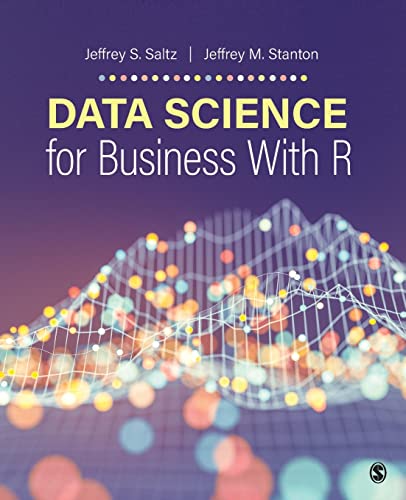Data Science for Business With R
Jeffrey S. Saltz is currently an Associate Professor at Syracuse University, in the School of Information Studies. His research and teaching focus on helping organizations leverage information technology and data for competitive advantage. Specifically, Jeff’s current research focuses on the socio-technical aspects of data science projects, such as how to coordinate and manage data science teams. In order to stay connected to the “real world”, Jeff consults with clients ranging from professional football teams to Fortune 500 organizations. Prior to becoming a professor, Jeff’s 20+ years of industry experience focused on leveraging emerging technologies and data analytics to deliver innovative business solutions. In his last corporate role, at JPMorgan Chase, he reported to the firm's Chief Information Officer and drove technology innovation across the organization. Jeff also held several other key technology management positions at the company, including CTO and Chief Information Architect. Jeff has also served as chief technology officer and principal investor at Goldman Sachs, where he invested and helped incubate technology start-ups. He started his career as a programmer, project leader and consulting engineer with Digital Equipment Corp. Jeff holds a B.S. degree in computer science from Cornell University, an M.B.A. from The Wharton School at the University of Pennsylvania and a Ph.D. in Information Systems from the New Jersey Institute of Technology. ... Read more Read less
Data Science for Business with R, written by Jeffrey S. Saltz and Jeffrey M. Stanton, focuses on the concepts foundational for students starting a business analytics or data science degree program. To keep the book practical and applied, the authors feature a running case using a global airline business’s customer survey dataset to illustrate how to turn data in business decisions, in addition to numerous examples throughout. To aid in usability beyond the classroom, the text features full integration of freely-available R and RStudio software, one of the most popular data science tools available. Designed for students with little to no experience in related areas like computer science, the book chapters follow a logical order from introduction and installation of R and RStudio, working with data architecture, undertaking data collection, performing data analysis, and transitioning to data archiving and presentation. Each chapter follows a familiar structure, starting with learning objectives and background, following the basic steps of functions alongside simple examples, applying these functions to the case study, and ending with chapter challenge questions, sources, and a list of R functions so students know what to expect in each step of their data science course. Data Science for Business with R provides readers with a straightforward and applied guide to this new and evolving field. ... Read more Read less











